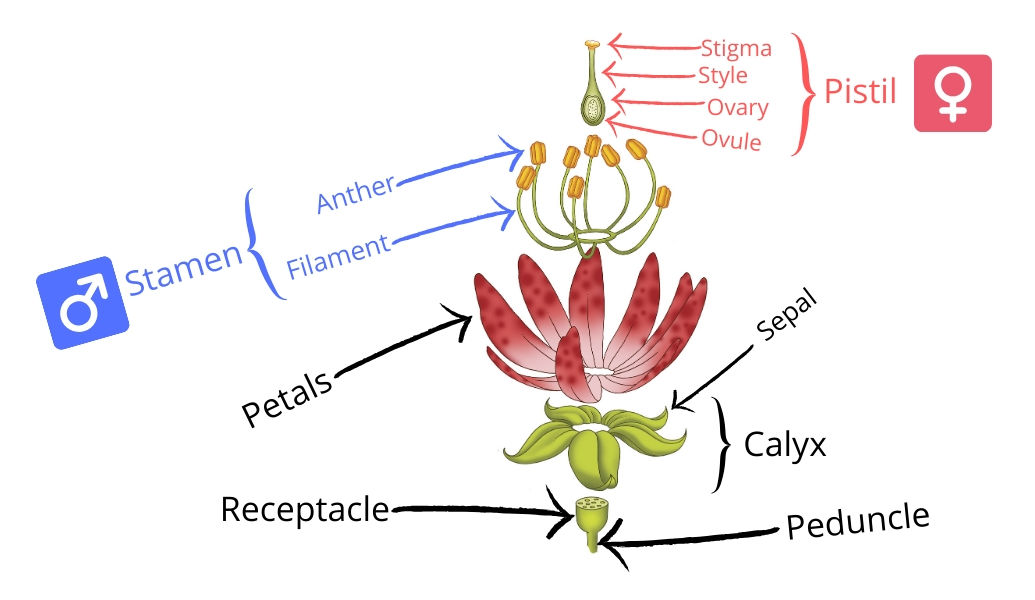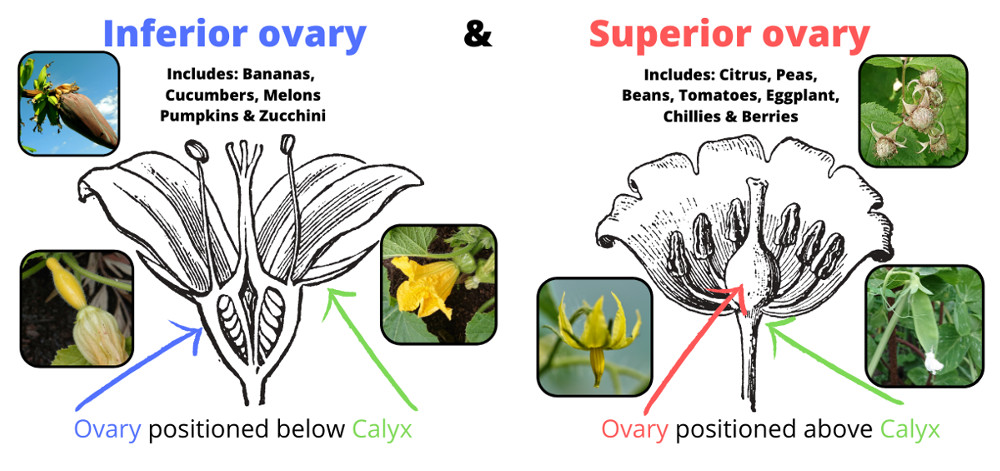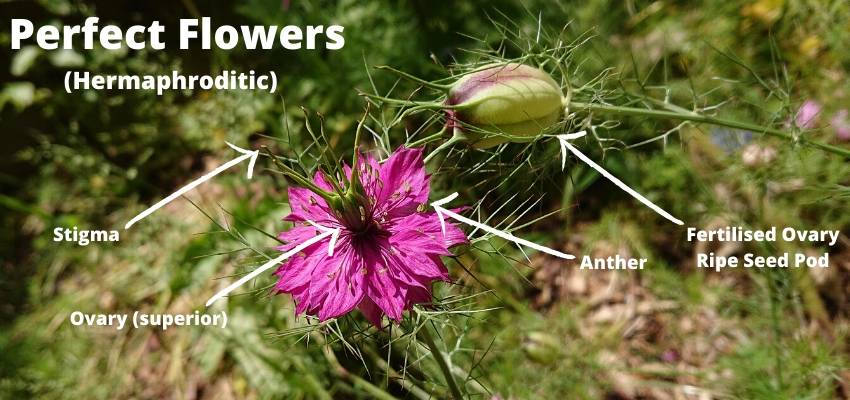What would a garden be without flowers? From a carefully choreographed summer border to the controlled chaos of a cottage garden, flowers offer beautiful rewards for the hours put into nurturing them.
But beneath all the colour and finery, flowers have a very serious purpose, and there's maybe a bit more going on than many people realise.
The Main Parts of a Flower
There are four main parts to a typical flower. The most immediately striking features are, of course, the petals. These play a significant role in attracting pollinating insects, as discussed below. However, despite their visual impact, they're not the most important parts as far as nature is concerned.
Next, the leafy petal-like growths around the base of the flower are known as the sepals. These are the remnants of the bud which protected the flower as it developed.
The fundamentally important parts of a flower, however, are the male and female reproductive organs that most blooms contain. Flowers which feature both male and female parts are known as perfect flowers and are capable of self-fertilisation.
Flowers with only the male or female parts are called imperfect, and these are more common in the vegetable bed than the ornamental border. But whether the reproductive organs are kept separate or combined in one flower, the same basic features are present.
Recognising the Male and Female Parts
The most prominent male parts of a flower are the stamens. These are the long filaments sprouting from the centre, each with a pouch of pollen called the anther at the end.
These stamens surround the smaller female parts, known as the pistils. These are usually found right at the heart of the bloom, and depending on the plant species, there can be more than one pistil in each flower.
Each pistil ends in a sticky tip called a stigma, which catches pollen from passing breezes or insects. The pollen is then moved down to the lower part of the female organ, which contains what are essentially the equivalent of unfertilised eggs, known as ovules.
If the right type of pollen completes this journey, the ovules will be fertilised and will start turning into seed. If the plant is a fruiting species, the rest of the female organ will begin to develop into the fruit surrounding the seeds.
Inferior & Superior Ovaries
Identifying where the ovary sits on a flower can help you with the identification and fertilisation of your plants. A superior ovary sits above the calyx of a flower, and an inferior ovary sits below it. The seeds and fruit of a plant will only ripen once the plant has been fertilised. Inferior ovaries are quite easily recognisable in the vegetable patch, particularly in the Cucurbita family (zucchinis, melons, pumpkins, gourds, cucumbers) as you often see the miniature fruit sitting underneath the calyx of the female flower as it opens. This fruit will only develop if pollination has taken place, otherwise the fruit will yellow & drop off. Once you can easily identify the male and female flowers you can pollinate by hand to increase your crop if required.
How Insect Pollination Works
Perfect flowers with both sets of reproductive parts can readily self-fertilise, with the pollen spreading inside the flower on the breeze or when a passing animal gives the plant a shake. However, there are strong genetic advantages to mixing the pollen between different plants to increase diversity.
And of course, plants which produce separate flowers for each gender need a little extra help to distribute the fertilising pollen. In both cases, pollinating insects such as bees are pressed into service to pass the pollen from one plant to another.
Most flowers produce a sweet nectar which the insects forage as food. This nectar has a strong smell to attract passing insects, and it's this which gives a flower its perfume. As the insects make for the nectar, the pollen rubs off from the male anther and sticks to them. It is then carried either deeper into the flower to the female parts, or to another flower or plant entirely.
The Importance of Petals
As a further insect attraction, a flower's petals act as colourful signposts to guide the bees down to where the nectar and pollen are stored. In the wild, many flowers are fairly drab and unimpressive to the human eye, as they've evolved to appeal to the bee's ultraviolet vision.
Nonetheless, some wild flowers are also brightly coloured in the parts of the spectrum that we can see, and earlier gardeners were drawn more strongly to these species. Down the ages, selective breeding has made these flowers more and more brilliant to human senses, resulting in the ornamental blooms we see today.
Indeed, many ornamental varieties of flower are now so highly refined toward human tastes that their reproductive ability has been dramatically reduced, and they are largely sterile. These plants produce little or no seed and need to be spread by propagation, offering little benefit for those looking to make a bee-friendly garden.
But whichever kind of flower you grow, from the miniature heads of herb plants to the brilliant hues of an aster, knowing that there's far more going on than meets the eye will only increase the enjoyment they offer.





_850.jpg)
_850.jpg)



